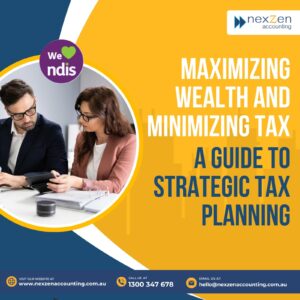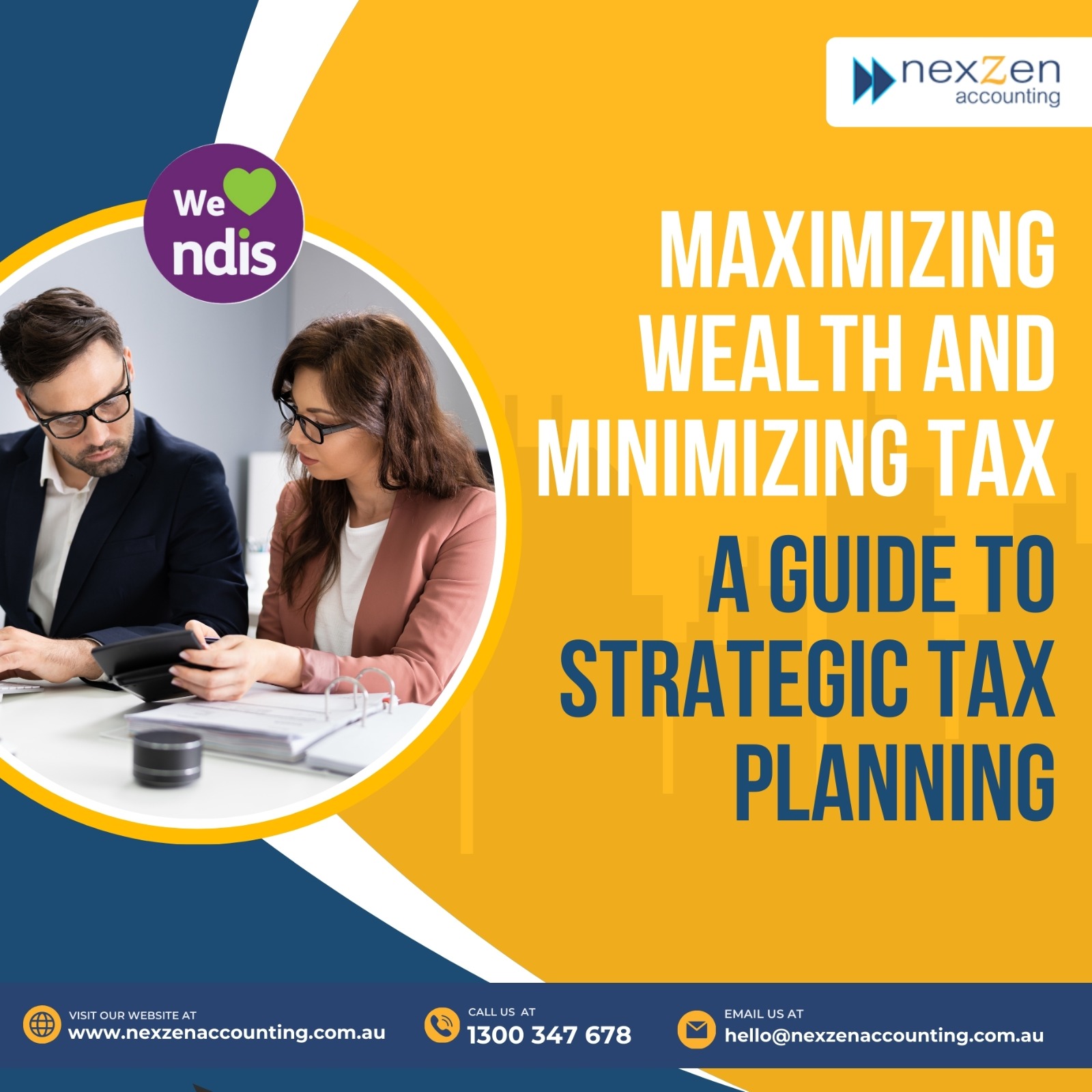Small business owners in Australia often require assistance in tax planning to ensure compliance with regulations, minimize tax liabilities, and optimize financial strategies. Here are the top six strategies to save thousands of dollars in tax.
Income Splitting
- Distribute income among family members judiciously:
- Allocate income based on individual tax thresholds.
- Ensure fairness and equity in distribution decisions.
- Consider factors like contribution to business activities.
- Utilize family members’ lower tax brackets:
- Allocate income to family members with lower incomes.
- Take advantage of lower tax rates for savings.
- Ensure compliance with tax laws and regulations.
- Optimize salary vs. dividends for directors:
- Evaluate the most tax-efficient mix of salary and dividends.
- Consider factors like personal tax situations and business needs.
- Seek professional advice for tailored recommendations.
- Consider spouse’s involvement in the business:
- Assess the spouse’s contribution to business activities.
- Allocate income or assets accordingly to maximize tax benefits.
- Ensure transparency and compliance with related regulations.
- Review related party transactions for compliance:
- Scrutinize transactions with family members or related entities.
- Ensure transactions are conducted at arm’s length.
- Comply with tax laws and regulations regarding related party dealings.
Timing of Income and Expenses
- Defer income to lower taxable year:
- Postpone receipt of income to subsequent tax periods.
- Delay invoicing or completion of projects strategically.
- Aim to shift income to periods with lower tax rates.
- Accelerate deductible expenses to current year:
- Pay for expenses in advance where possible.
- Consider prepaying expenses such as rent or subscriptions.
- Ensure expenses are deductible in the current tax year.
- Plan asset purchases strategically for depreciation:
- Time asset acquisitions to maximize depreciation deductions.
- Consider purchasing assets before the end of the financial year.
- Evaluate available depreciation methods for tax optimization.
- Utilize prepayments for future deductible expenses:
- Make prepayments for services or supplies to lock in deductions.
- Ensure prepayments are for expenses that are deductible.
- Monitor cash flow impact of prepayment decisions.
- Align timing strategies with business goals:
- Coordinate timing strategies with business expansion plans.
- Ensure tax planning aligns with overall financial objectives.
- Review timing decisions regularly to adapt to changing circumstances.
Maximising Tax Deductions
- Maximize deductions for legitimate business expenses:
- Identify all eligible expenses incurred for business purposes.
- Keep detailed records and receipts for documentation.
- Ensure deductions are in line with tax laws and regulations.
- Claim depreciation on eligible business assets:
- Determine the depreciation method suitable for each asset.
- Record asset purchases accurately for depreciation calculation.
- Regularly review asset values and adjust depreciation claims accordingly.
- Deduct costs related to acquiring capital assets:
- Include expenses such as legal fees and stamp duty.
- Allocate costs associated with acquiring capital assets appropriately.
- Ensure compliance with capitalization rules for tax deductions.
- Claim deductions for motor vehicle expenses:
- Keep accurate records of business-related vehicle usage.
- Choose the appropriate method (e.g., logbook or cents per kilometer) for claiming deductions.
- Separate personal and business use to claim eligible expenses.
- Document and substantiate all deductible expenses:
- Maintain organized records and documentation for all expenses claimed.
- Ensure expenses are directly related to business activities.
- Be prepared to provide evidence or documentation upon request by tax authorities.
Dividends & Distributions Plan
- Understand Tax Implications:
- Assess the tax treatment of dividends for shareholders.
- Consider the impact of dividend imputation credits.
- Ensure compliance with dividend tax laws and regulations.
- Evaluate Financial Needs:
- Determine the cash flow requirements of shareholders.
- Balance dividend distributions with business growth needs.
- Align distributions with shareholder expectations and goals.
- Consideration of Shareholder Profiles:
- Analyze the tax positions and preferences of individual shareholders.
- Customize dividend distribution strategies based on shareholder profiles.
- Account for different shareholder groups’ needs and circumstances.
- Utilize Franking Credits:
- Optimize the use of franking credits for tax benefits.
- Ensure dividends are franked to maximize tax advantages.
- Leverage franking credits to enhance after-tax returns for shareholders.
- Review Business Performance:
- Assess the profitability and cash flow position of the business.
- Ensure dividend distributions are sustainable and aligned with performance.
- Monitor business performance indicators to inform dividend decisions.
Utilizing Tax Concessions and Incentives
- Explore eligibility for small business concessions:
- Review criteria for small business tax concessions.
- Assess eligibility based on turnover and other factors.
- Take advantage of concessions such as simplified depreciation rules.
- Investigate government grants and incentives available:
- Research available grants and incentives for small businesses.
- Determine eligibility criteria and application processes.
- Explore grants for innovation, research, and development.
- Consider capital gains tax concessions for small businesses:
- Understand CGT concessions available to small businesses.
- Assess eligibility based on business structure and asset disposal.
- Utilize concessions like the 15-year exemption or small business rollover.
- Explore tax incentives for NDIS industry:
- Investigate tax incentives specific to the NDIS sector.
- Consider deductions or concessions available for NDIS providers.
- Ensure compliance with regulatory requirements for claiming incentives.
Capital Gains Tax Plan
- Plan asset disposals strategically for tax outcomes:
- Evaluate potential tax implications before selling assets.
- Consider timing of sales to optimize tax outcomes.
- Plan for exemptions or concessions available for certain assets.
- Utilize small business capital gains tax concessions:
- Determine eligibility for CGT concessions as a small business.
- Explore concessions like the 15-year exemption or retirement exemption.
- Maximize benefits by structuring asset disposals accordingly.
- Consider timing of capital gains events:
- Evaluate the timing of capital gains realization.
- Assess the impact of timing on tax liabilities.
- Plan for capital gains events in line with overall financial goals.
- Offset capital gains with capital losses:
- Utilize capital losses to offset capital gains.
- Consider selling underperforming assets to realize losses.
- Ensure compliance with ATO rules for offsetting gains.
- Explore rollover relief for business assets:
- Investigate rollover relief options for transferring assets.
- Assess eligibility for rollover relief provisions.
- Plan asset transfers strategically to maximize relief benefits.










